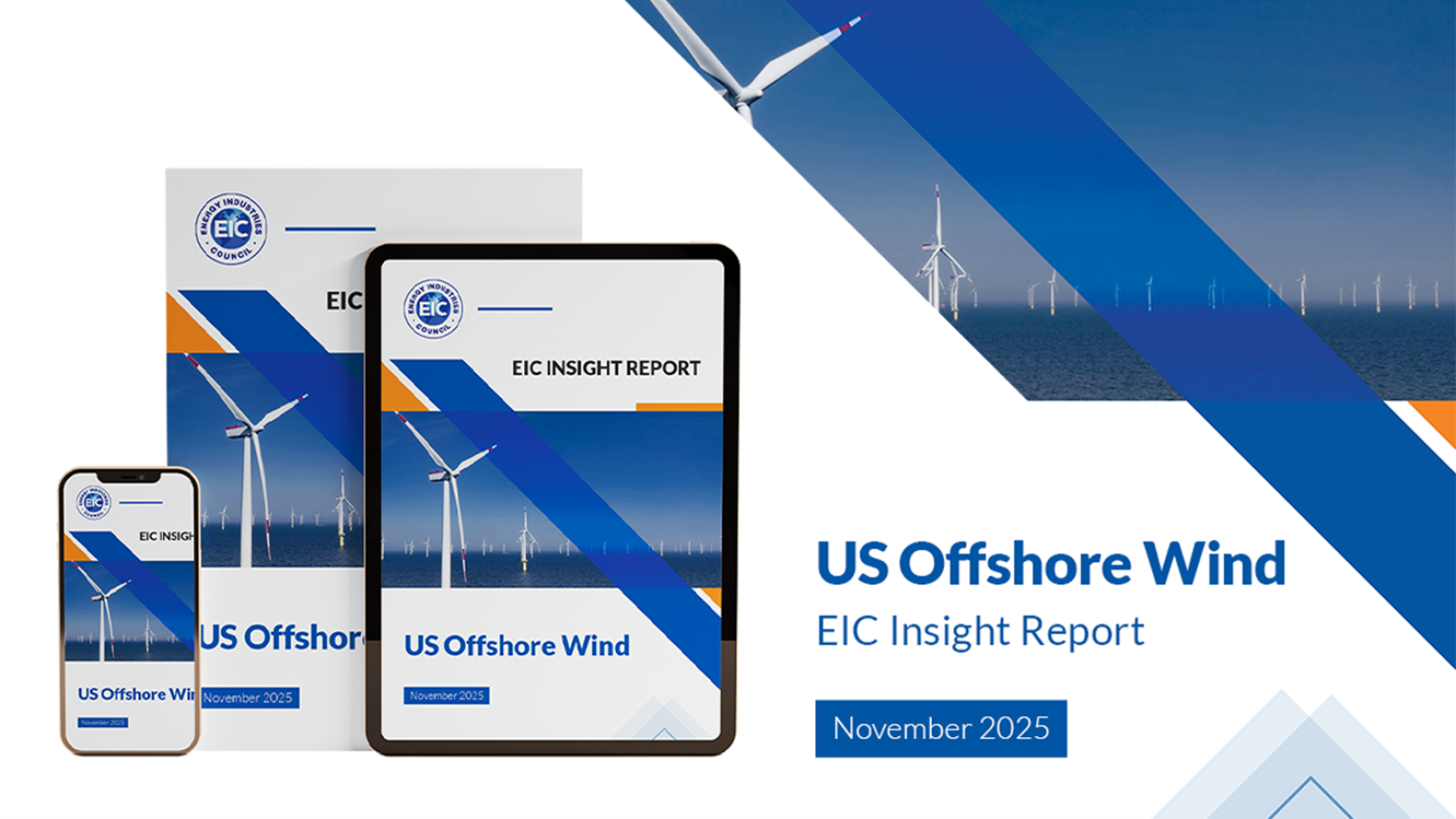The US offshore wind pipeline contracted sharply over the past year, falling to 23 projects from 45, as developers face a closing window for tax credits, a freeze on federal leasing and new trade frictions, according to a new report from the Energy Industries Council (EIC), the world-leading energy supply chain trade association and provider of project data, events and market insights.
The EIC US Offshore Wind Insight Report, released today, reveals that, over the same period (Q3 2024–Q3 2025), planned capacity fell to 25.4 gigawatts from 55.9 gigawatts.
Policy changes are the main driver behind the drop. The One Big Beautiful Bill Act (OBBBA) establishes two deadlines for incentive eligibility: start construction by 4 July 2026 to secure tax-credit eligibility for up to four years, or begin service by 31 December 2027. The EIC report finds roughly 83% of projects are not aligned with these dates.
Manufacturing support under tax codes 45X and 48C also winds down after 2027. Concurrently, domestic content requirements, which rose from 20% under the Inflation Reduction Act to 27.5% under the OBBBA, are set to increase further to 35% for projects starting after January 2026, tightening options for developers who source major components from abroad.
Federal leasing opportunities have diminished. A day-one presidential memorandum withdrew offshore areas from new leasing, and the Bureau of Ocean Energy Management later pulled back designated wind energy areas in multiple regions, including the Gulf of Mexico and the Atlantic. Several states have followed suit, cancelling or delaying offshore wind tenders.

Trade measures have added to cost pressure, with duties of 10% to 15% on goods from the EU and UK and a rise to 50% on some steel and aluminium lines hitting blades, towers, nacelles and cables. The Department of Transportation rescinded $679 million in port grants, slowing critical quayside upgrades.
The report cites stop-work costs of up to $50 million a week on the Empire Wind project and more than $15 million a week on Revolution Wind. While a few projects such as Empire and Revolution are resuming construction, others remain stalled as developers reassess portfolios or redirect investment to markets outside the US.
California is an exception, albeit a limited one. The state has incorporated offshore wind ports into a five-year infrastructure plan and secured bond funding, including $475 million for ports and a $20 million award for the Port of Long Beach. The CADEMO floating project, a 60-megawatt venture in state waters targeting a 2028 operational date, remains unaffected by federal outer shelf reversals.
The offshore wind industry’s supply chain is hedging its bets. About 81% of firms active in US offshore wind also work in upstream oil and gas, with broad overlap in other energy sectors. This diversification underpins supply-chain resilience and enables companies to extend their activity into other markets such as Canada, but it also risks eroding momentum in the US as capacity and focus move elsewhere.
“This reinforces the uncertainty of the [US offshore wind] industry, as opposed to its wholesale cancellation,” the report’s authors, Beatriz Corcino, EIC Energy Analyst, and Kevin Pedrosa, EIC Senior Supply Chain Analyst, write. They add that the contraction reflects delays and re-evaluations rather than a collapse of long-term potential.
Clearer policy signals, the report notes, will be crucial for restoring investor confidence and restarting growth.
“Policy clarity will be decisive in determining whether these projects move forward or stay in limbo,” said Rebecca Groundwater, EIC Global Head of External Affairs. “Stable, predictable frameworks are what investors need to turn uncertainty into action and position the US to reclaim momentum in offshore wind development.”